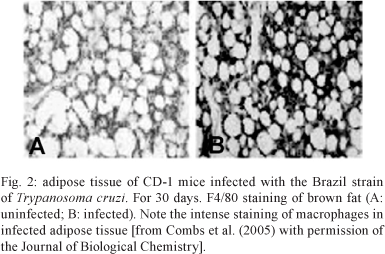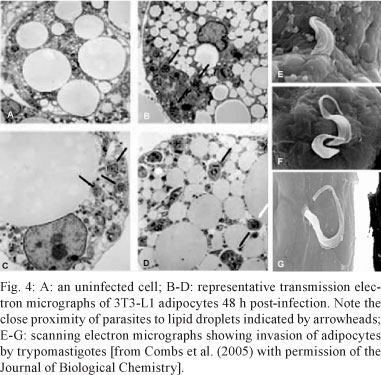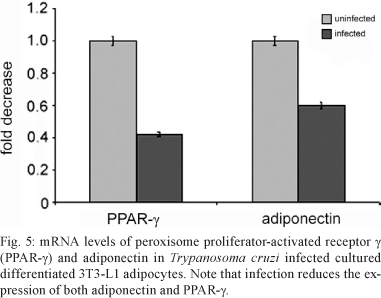Trypanosoma cruzi infection of the adipose tissue of mice triggers the local expression of inflammatory mediators and a reduction in the expression of the adipokine adiponectin. T. cruzi can be detected in adipose tissue by PCR 300 days post-infection. Infection of cultured adipocytes results in increased expression of cytokines and chemokines and a reduction in the expression of adiponectin and the peroxisome proliferator-activated receptor ³, both of which are negative regulators of inflammation. Infection also results in the upregulation of cyclin D1, the Notch pathway, and extracellular signal-regulated kinase and a reduction in the expression of caveolin-1. Thus, T. cruzi infection of cultured adipocytes leads to an upregulation of the inflammatory process. Since adiponectin null mice have a cardiomyopathic phenotype, it is possible that the reduction in adiponectin contributes to the pathogenesis of chagasic cardiomyopathy. Adipose tissue may serve as a reservoir for T. cruzi from which parasites can become reactivated during periods of immunosuppression. T. cruzi infection of mice often results in hypoglycemia. In contrast, hyperglycemia as observed in diabetes results in increased parasitemia and mortality. Adipose tissue is an important target tissue of T. cruzi and the infection of this tissue is associated with a profound impact on systemic metabolism, increasing the risk of metabolic syndrome.
adipose tissue; adipocyte; adiponectin; Trypanosoma cruzi; Chagas disease





